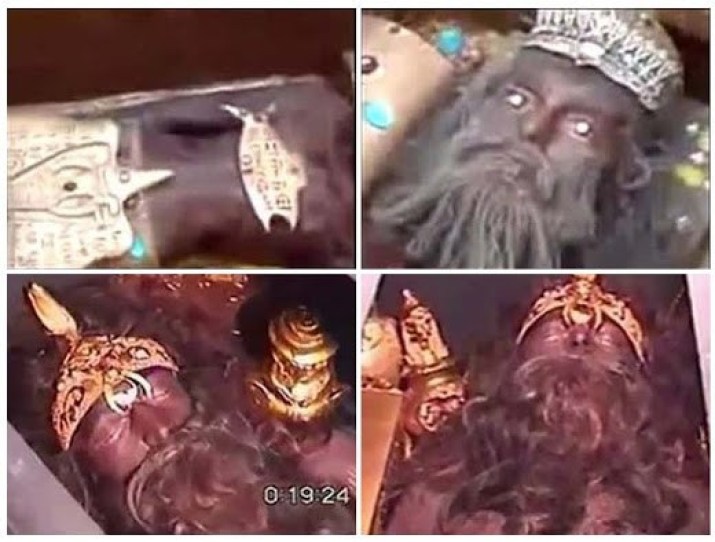12000 Years Old Body Of A Anunnaki King Found Completely Intact?
This discovery was made completely by chance in 2008, and if we know what happened is certainly thanks to the Russian media, and to the television press.
It happened in Kurdistan, Iran, a country quite closed to the world, at least in the western world, but with good relations with Russia. (Body of an Anunnaki King)
Although hidden until today, we get to know what has been published by the Russian press.

The discovery occurred in work when digging the ground to make the foundations of a house.
Then came a mausoleum containing three coffins, and after making more concise excavations, the remains of an ancient civilization and the ruins of a city were found in a layer of earth. (Body of an Anunnaki King)
Archaeologists determined that the monument and the city were built between 10,000 and 12,000 years ago, a date quickly revised by the Islamic authorities after Find publication in the Russian press.
The Iranian authorities publicly stated that the ruins were 850 years old, which obviously does not correspond to the facts and is, again, an official lie.
Of the three sarcophagi found in the mausoleum, we only have video evidence of the first two.
We know nothing of the third, nor of its content, nor of who was inside.
As you can see, it is very difficult from the video to determine the height of the individual, although they appear to be very high.

Both seem to be in a state of suspended animation. One wears a crown, suggesting that he was the ruler of the city, and was buried, as can be observed, with his sorcerer, which leads him to conclude that in the third sarcophagus he must have contained his wife Reina.
There are gold coins placed in the eyes of the king, which is a well-attested habit of antiquity. This is a first blow to the official lie that the ruins are from the twelfth century.
It can be observed that it has Caucasian features, but copper skin: the second individual sarcophagus shares these same characteristics.
It looks like they are adorned with gold and precious stones.
These ornaments carry a cuneiform script that is not identifiable but has been translated, giving the name of the second man found in the second sarcophagus and thus his magician by profession.
The royal sarcophagus seems to be clothed with gold or metal that resembles it, and near the monarch can be seen a gold casket encrusted with strange gems, just like those found adorning the king, it is said strange because they seem luminescent. (Body of an Anunnaki King)





